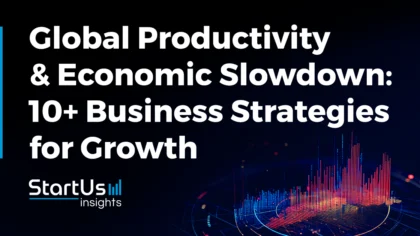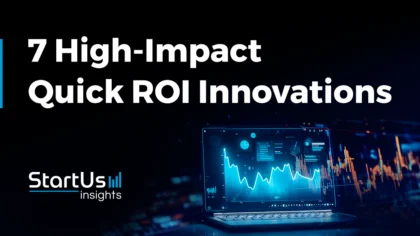Think about successful sports clubs – they have scouts around the world that keep an eye on emerging talent to bring them to their team. Successful businesses aren’t much different. The talents they look out for are game-changing startups and scaleups. Going beyond startups, companies also engage in partner scouting or supplier scouting to identify relevant research institutions, vendors, technology hubs, and more.
The challenge here is that in the current age of information and innovation, we get swamped with incredibly large amounts of information every day. This makes it impossible to cut through the noise manually. You need technology to dig into these data points and identify the most relevant startups, scaleups, and partners that match your needs. This is where data-driven startup scouting comes in.
What is Startup Scouting?
But first, what is startup scouting? We define Startup Scouting as the process of identifying startups and scaleups that can support an organization’s innovation goals with partnerships, acquisitions, or onboarding them as vendors.
Startup Scouting – sometimes also called Startup Sourcing – is an important part of Innovating Scouting which leverages innovation intelligence to identify industry trends, technologies, and startups. Startup Scouting involves a methodical search of the most relevant startups with the potential to further an organization’s innovation agenda. Adding the data-driven aspect to startup scouting makes it the most efficient way for corporations to become more competitive through identifying external innovative solutions that match their short-term and long-term corporate strategy.
Let’s take a look at how data-driven startup scouting gives you a competitive advantage!
Why Data-Driven Startup Scouting is the New Norm
Traditional startup scouting relied on desk analysts who would go through company documents for days, if not weeks. In the process, they needed to analyze hundreds of irrelevant startups to find one relevant one. However, as digitalization brings firmographic data from companies globally online, manual desk research becomes ineffective, inefficient, and increasingly expensive.
That is why more and more global industry leaders rely on Software-as-a-Service (SaaS) companies to take over. SaaS leverages Big Data & Artificial Intelligence to enable data-driven startup scouting that saves weeks of desk research, delivers relevant results instantly, and gives you an exhaustive list of potential partners by scanning the entire global startup ecosystem – not just a fraction of it. This makes data-driven startup scouting the new norm and moves it from a process-driven approach to an outcome-driven approach.
And these are not the only advantages of data-driven startup scouting:
- Eliminate Irrelevant Results: Data-driven startup scouting uses rule-based methods to eliminate irrelevant startups, giving you more time to focus on the relevant ones.
- Prioritize Potential Partners: Big Data & AI in combination with human expertise match startups to your scouting requirements, delivering a prioritized list of potential partners.
- Get Actionable Insights: By including other data sources such as news or social media, data is contextualized to give you actionable insights.
How Data-Driven Startup Scouting Accelerates Corporate Strategy
On a more strategic level, startup scouting allows you to gain early insights into new and potentially disruptive innovation. This is especially important when you think about Airbnb, for example. It took two guys, a laptop, and the need for a bed to disrupt the entire hospitality industry. Disruptive innovation often comes from the outside of an organization, making it all the more important to spot it early.
Identifying disruptive startups and innovation early makes sure that you stay ahead of your competitors by having access to emerging technologies before they do. Once you have access to this emerging technology, you are able to test it through a Pilot Project or Proof-of-Concept (PoC), lowering the cost of internal Research & Development (R&D) efforts.
All of this together speeds up product development cycles and market proximity, allowing you to diversify product ranges and revenue streams faster while simultaneously positioning yourself as a leading innovator.
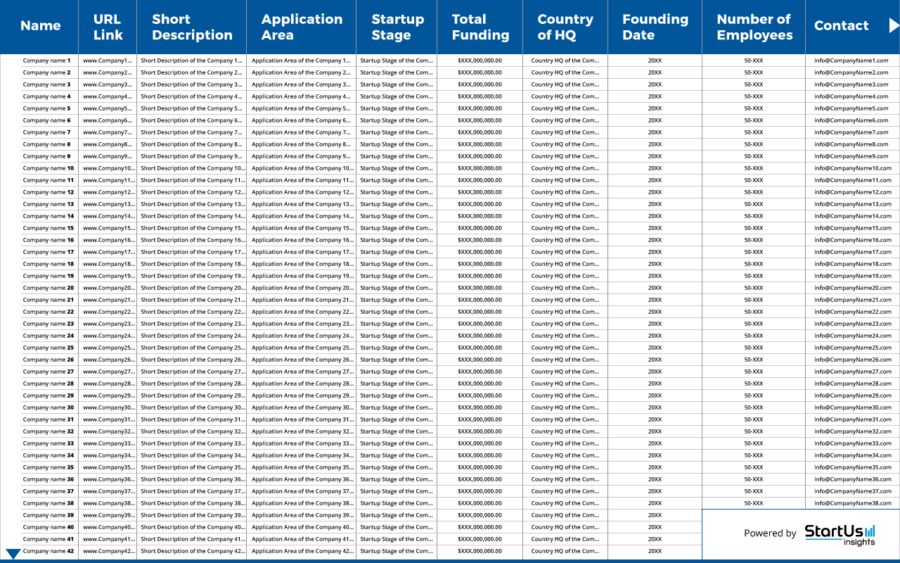
The Innovation Database is an example of a Data-Driven Startup Scouting Deliverable. It is a pre-qualified list of relevant startups, scaleups, partners, with 100 entries on average.
Startup Scouting Enables You to Stay Competitive in Rapidly Changing Business Environments
Corporations usually have large divisions and complex hierarchies that slow down innovation. However, as technology development happens simultaneously across the world, it is important to have an exhaustive, global overview. Access to knowledge of the emerging companies developing innovative technologies means your company identifies potential opportunities that you might otherwise lose out on to your competitors – setting you behind in the industry.
For instance, Kodak, once a leader in film cameras, did not engage with digital cameras early enough and lost the market to Canon and Nikon. More recently, Nokia lost its market dominance to Apple and Samsung after not realizing the potential of smartphone software development. On the contrary, startups are lean, work with fewer constraints, and have higher agility – which means that they develop new technology faster and more efficiently. This makes them an ideal source of external innovation.
Tapping into this source of external innovation through startup scouting enables companies to quickly incorporate new products and services into their portfolio and to stay competitive in rapidly changing business environments. This proven process allows companies to meet their innovation targets through collaboration with external innovation agents. This collaboration generally occurs in the form of building joint ventures, strategic partnerships, or buying a product or a service from the startups (build, partner, buy strategy).
To sum up, the data-driven startup scouting process enables you to identify relevant startups and scaleups as well as the emerging technologies they develop.
What is the Outcome of Data-Driven Startup Scouting?
To receive your desired outcomes, it is vital to define the criteria of what makes a potential partner relevant. First and foremost, this includes the technologies or services that are relevant but also other factors such as founding year, geographical location, funding stage, technology readiness, etc. Generally speaking, this is the outcome you will get from data-driven startup scouting services:
Quantitative Startup Scouting
First, a Quantitative Analysis is performed to search through millions of startups & scaleups globally and narrow down the results to thousands of emerging companies. On these initial results, additional analysis is performed to narrow down results and to verify factors such as where are the startups from, what is their geo-location, how fast are they growing, what makes them successful, what are technologies they are using. In this stage, you can still expect hundreds of relevant results depending on the initial challenge you want to solve through startup scouting.
Qualitative Startup Scouting
A further Qualitative Screening narrows down the pool of relevant startups and/or scaleups by ranking them according to criteria defined by your innovation teams/units. Based on this information, you will receive an overview of the top 30/20/10 startups. This includes individual slides on the most relevant solutions for your topic of interest. The slides feature general firmographic data on the startup, information on the main value proposition and technology, market readiness level, etc.
As a bonus, the individual innovation areas and technologies that relevant startups work on are arranged in a mind map topology – the Innovation Map – that visualizes their structure, making innovation in any topic accessible at one glance.
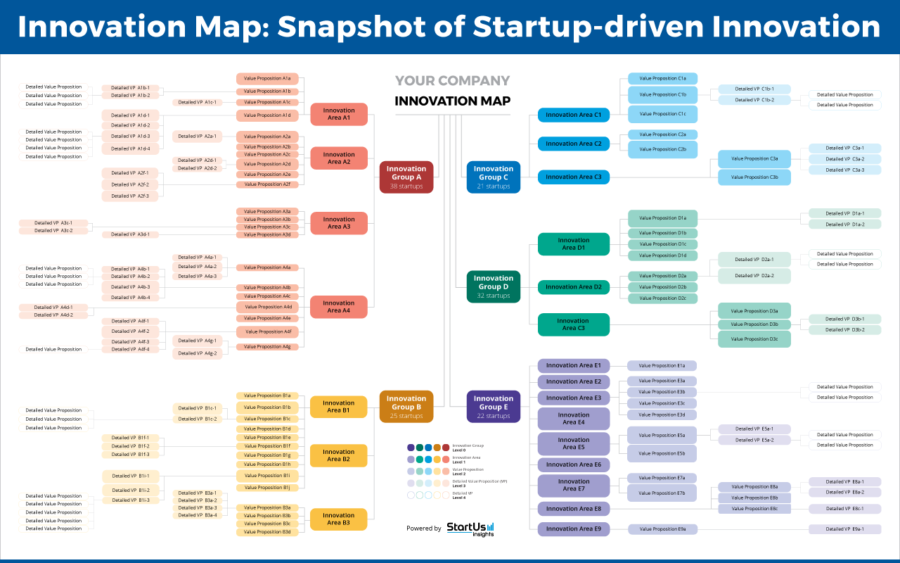
The Innovation Map is an example of a Data-Driven Startup Scouting Deliverable. It gives you an overview of innovation areas and applications, accessible at one glance.
Regardless of your industry and the solutions you are looking for, data-driven startup scouting delivers promising startups and emerging technologies. By identifying the right startups and partners for your innovation goals, you take your business to the next level.
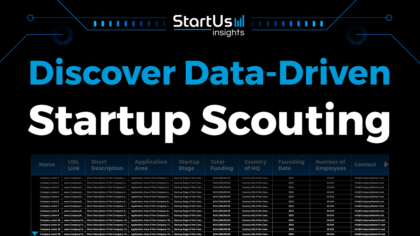
![10+ Top Deep Tech Trends [2025-2030]: From Key Statistics to Strategic Enterprise Payoffs](https://www.startus-insights.com/wp-content/uploads/2025/05/Deep-Tech-Trends-SharedImg-StartUs-Insights-noresize-420x236.webp)
